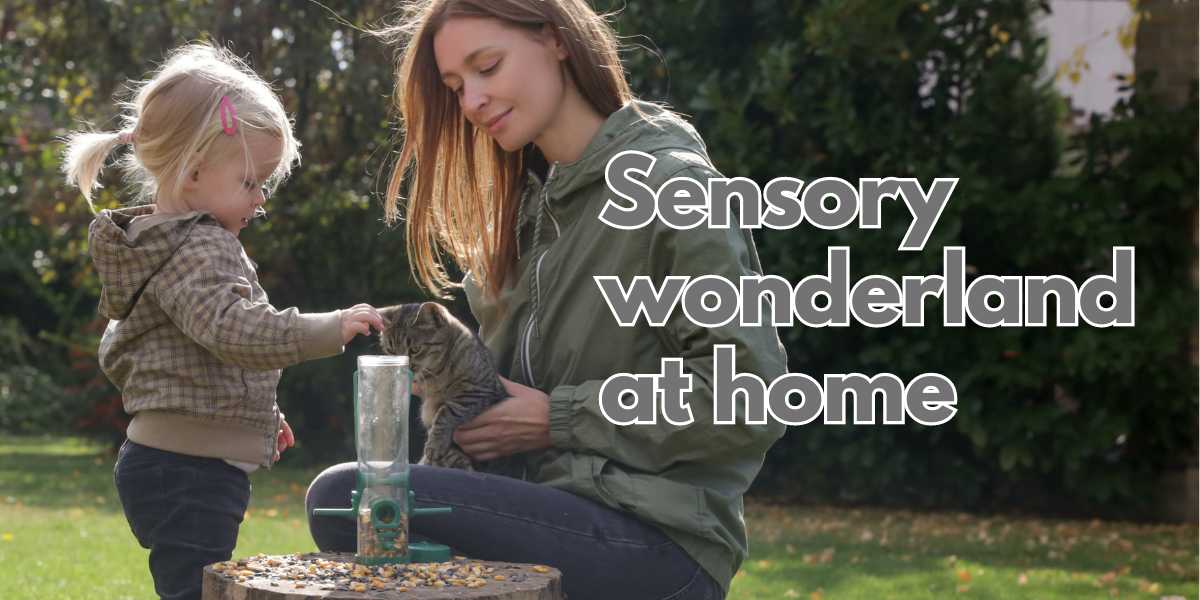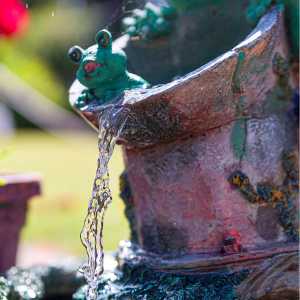Gardens have an incredible potential to be more than just beautiful spaces—they can become sensory havens for children with autism, providing a rich tapestry of experiences to engage and comfort. Here are ten garden elements designed to stimulate and soothe the senses, tailored to the unique needs of children on the autism spectrum.
Texture Pathways:
- Benefit: Textured pathways, adorned with smooth stones, soft grass, bark, and rubberised mats, offer a tactile wonderland. These surfaces encourage exploration, providing varied sensations underfoot and promoting sensory development.
Scented Plants:
- Benefit: Aromatic flowers and herbs like lavender, chamomile, mint, and roses infuse the air with delightful scents. This not only pleases the olfactory senses but can also have a calming effect, contributing to a serene garden environment.
Wind Chimes:
- Benefit: Hanging wind chimes of different materials and lengths brings the gentle melody of nature to the garden. The soft tinkling sounds provide auditory stimulation and a soothing background, creating a tranquil atmosphere.
Tactile Plants:
- Benefit: Selecting plants with diverse textures, such as fuzzy leaves or rough bark, invites children to explore through touch. This tactile engagement encourages a connection with nature and enhances sensory awareness.
Colourful Flowers:
- Benefit: A palette of vibrant flowers adds a burst of colour to the garden. The visual stimulation of different hues creates an aesthetically pleasing environment and can be a source of joy for children with autism.
Sensory Pathway:
- Benefit: Designing a sensory pathway with an assortment of materials underfoot—stepping stones, soft grass, or textured tiles—creates a dynamic and engaging experience. This pathway invites movement, promoting both physical activity and sensory exploration.
Water Features:
- Benefit: The addition of water features, such as fountains or ponds, serves a dual purpose. The visual appeal of flowing water and the soothing sounds contribute to a calming atmosphere, offering a multi-sensory experience.
Outdoor Seating:
- Benefit: Comfortable seating options like hammocks, swings, or rocking chairs provide a space for relaxation and contemplation. These seating choices offer a refuge within the garden, allowing children to unwind while surrounded by nature.
Bird Feeders:
- Benefit: Hanging bird feeders attract feathered friends, introducing both visual and auditory stimuli. The presence of birds provides a dynamic and ever-changing element to the garden, fostering a connection with the natural world.
Interactive Art:
- Benefit: Incorporating interactive art installations, such as hanging mobiles or kinetic sculptures, brings a playful and creative dimension to the garden. These installations respond to touch or movement, encouraging interactive engagement and fostering a sense of wonder.
In tailoring gardens to the unique sensory preferences of children with autism, we create spaces that not only captivate the senses but also provide therapeutic benefits. A thoughtfully designed garden becomes a haven, a place of exploration, relaxation, and joy for children on the autism spectrum.











